Accessible streetscape
Inclusive design considers the needs of all people, including disabled people.
The provision of tactile paving is an integral consideration in delivering an accessible built environment, including streets and spaces. Visibility Scotland will provide their interpretation of tactile paving. However, the Department of Transport’s guidance on tactile paving should always be the primary reference source (link at the bottom of the page). We would be happy to provide more information on request.
Tel: 0141 332 4632
Tactile paving surfaces are critical because they convey vital environmental information, including hazard warnings and directional guidance, to people with low or no vision. They also support independent mobility and can be read by foot or cane.
1. Blister paving
The profile of the blister surface is a series of tactile (raised dots all in a uniform sequence). Blister paving is used to mark road crossings.
The guidance states that red blister paving with a stem/tail (much like an L shape) extending from the drop-down kerb to the shoreline (wall line) is used to mark a push-button-controlled crossing. The tactile paving colour can be changed to suit the environment’s heritage.
The control box should always be positioned on the right. However, this guidance is not always followed.
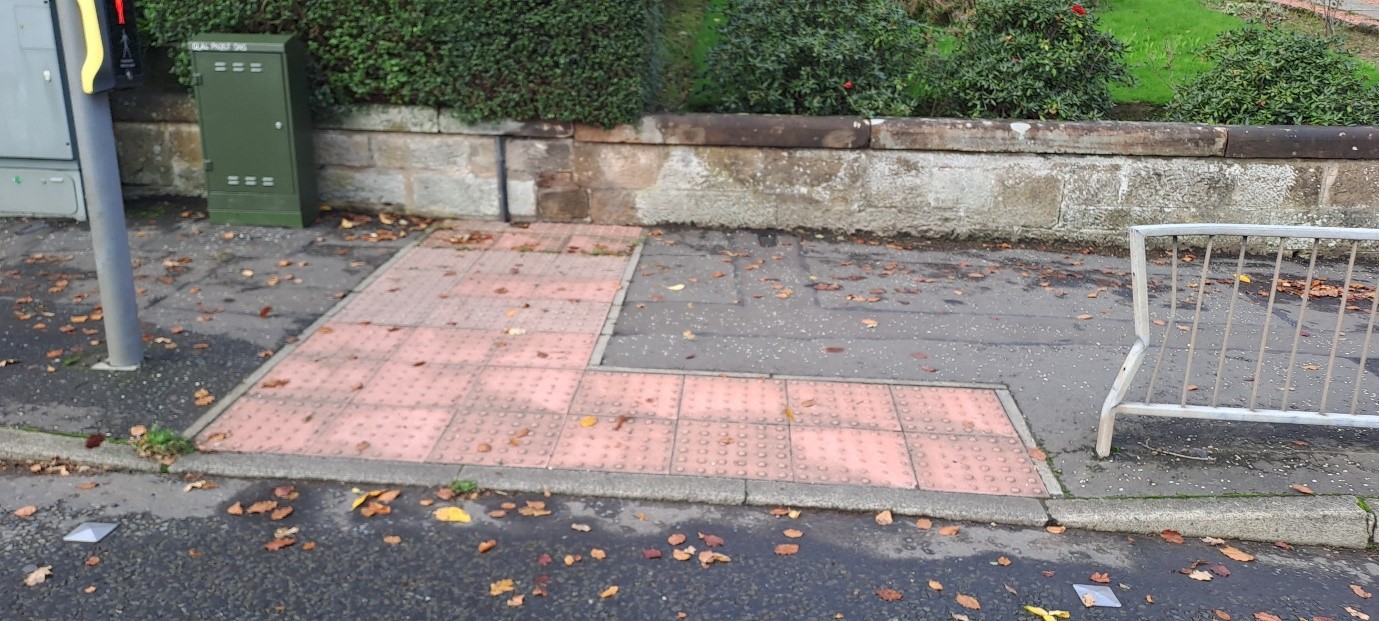
Image one: controlled crossing with red blister paving
Tan/sand-coloured blister paving is used for uncontrolled crossings.
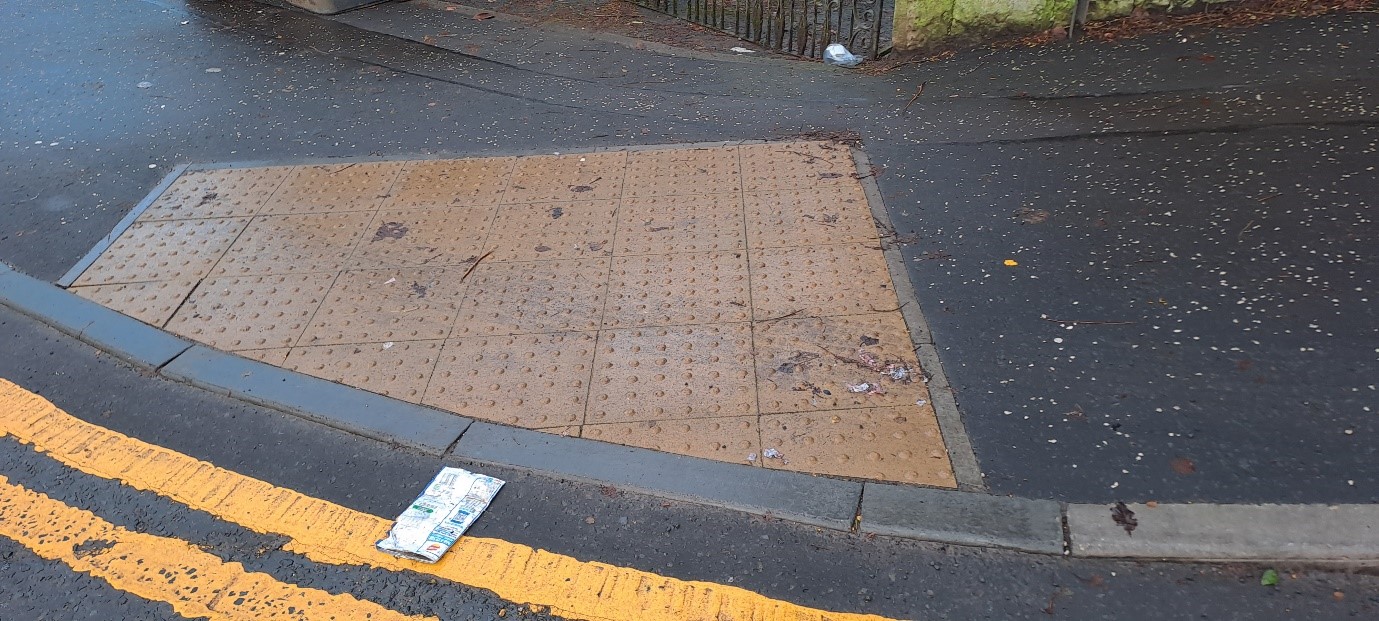
Image two: uncontrolled crossing with tan/ sand blister paving.
The guidance does not state that the stem/tail should extend to the shoreline. This can make detecting the crossing particularly challenging for vision-impaired travellers.
Visibility Scotland always recommends using a stem to ensure detection.
2. Offset blister paving
The profile of the offset blister surface is a series of tactile (raised dots) that are not in a uniform sequence. This is used to mark hazards.
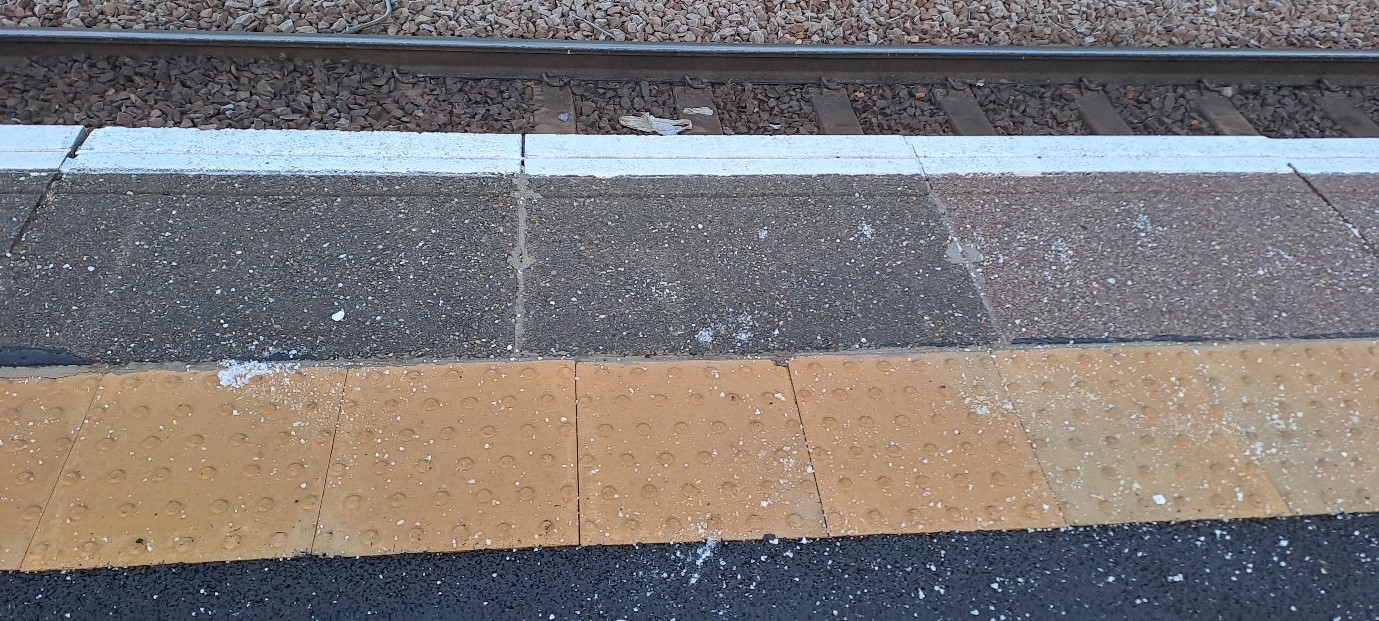
Image three: offset blister paving at a train platform.
3. Corduroy Hazard Warning Surface
The profile of the corduroy surface comprises rounded bars running transversely (across) the direction in which people will be walking.
The corduroy surface conveys the message ’hazard, proceed with caution’. Its purpose is to warn people of the presence of specific hazards. This includes the top and bottom of the steps or a ramp.
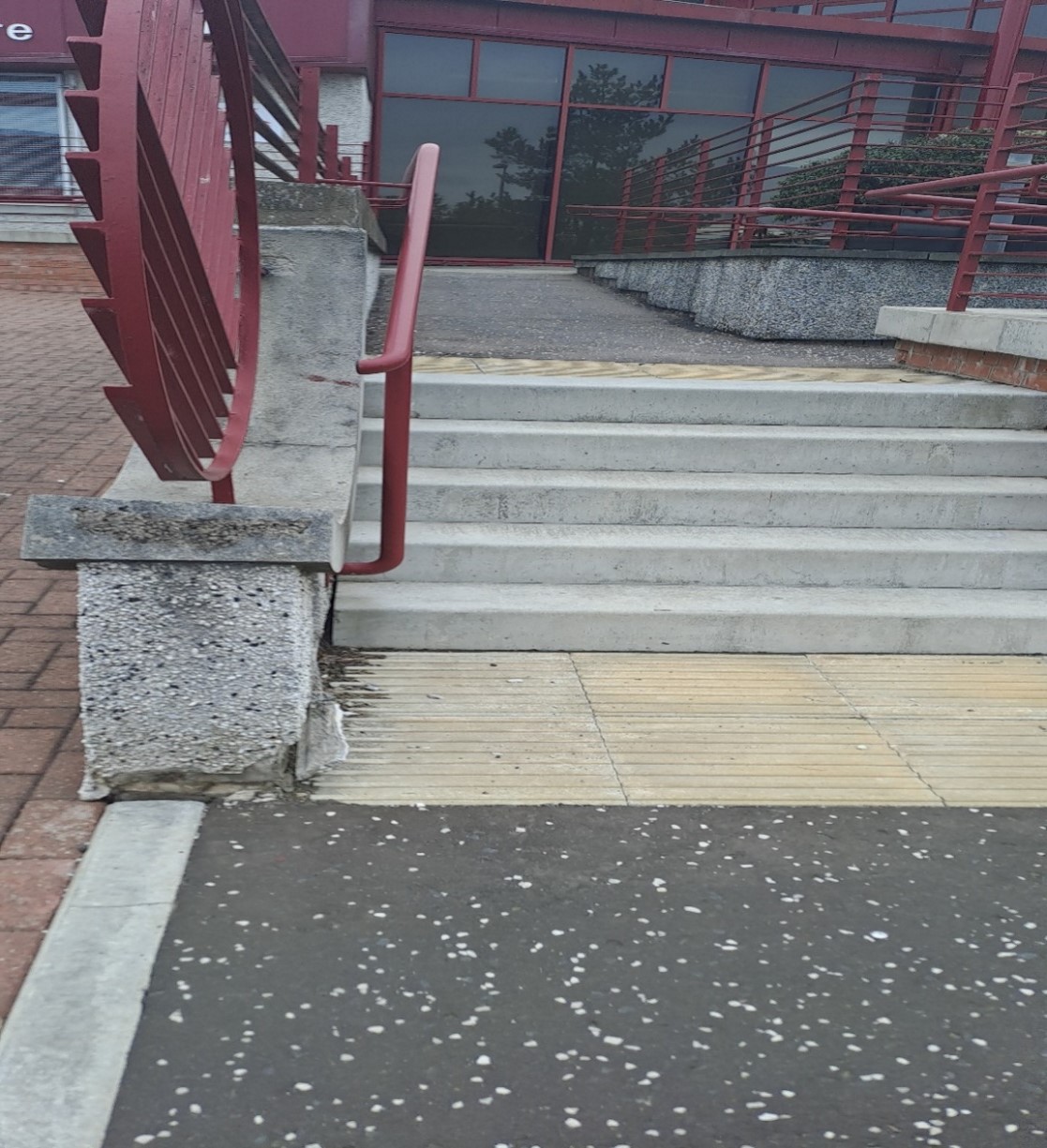
Image four: hazard warning – corduroy paving
4. Lozenge tactile paving
The profile of the warning surface comprises rows of uniformed ‘lozenge’ shapes. The lozenge shape is a round, ‘pill-like’ shape similar to the archway shape.
The platform edge (on-street) warning surface warns people that they are approaching the edge of an on-street tram or other Light Rapid Transit platform.
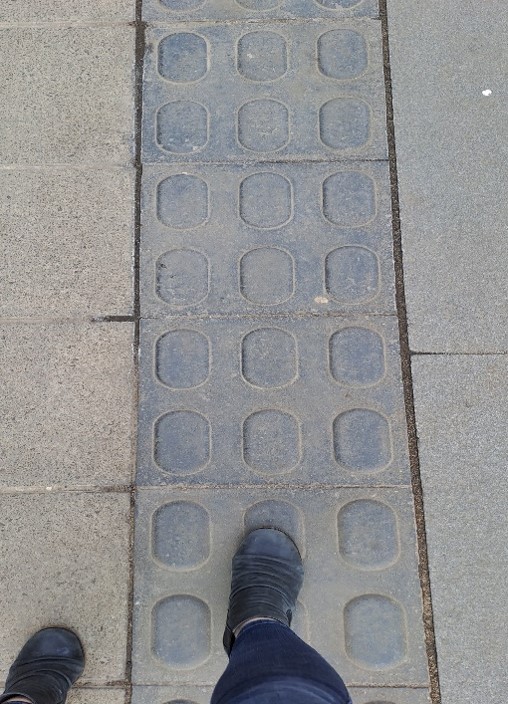
Image five: lozenge shape tactile paving.
5. Guidance Path Surface
The profile of guidance tactile paving is intended to act as a guide across large paved spaces, with the bars lying parallel to the direction of travel. Where a turn is encountered, the alignment of the paving should reflect the change of direction.
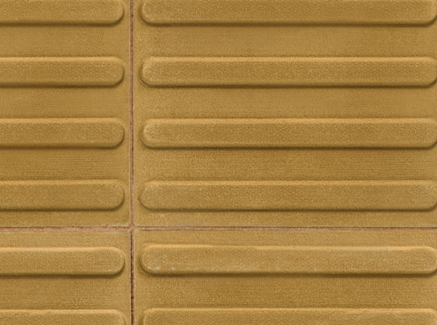
Image six: guidance tactile paving
6. Cycleway paving
The segregated shared cycle track/footway tactile paving surface profile comprises a series of raised, flat-topped bars.
This is similar to corrugated paving, but the difference is the spacing between the bars (which are wider than guidance paving), and the direction in which the bars are positioned is key.
On the footway side, the surface is laid so that the bars run transversely across the main direction of travel for people walking. In this orientation, it is known as the ‘ladder’ surface.
On the cycle trackside, the surface is laid so that the bars align with the main direction of travel for people cycling. In this orientation, it is known as the ‘tramline’ surface.

Image seven: Cycleway paving used in the direction of the cyclist’s flow.
Examples of good practice
- All travellers (walking and wheeling) should feel safe when travelling in urban spaces. Consistency is key.
- When designing a streetscape, the 'level of amenity’ must be considered to avoid discrimination.
- Segregated spaces should be identifiable.
- Crossings should be controllable, as this increases the feeling of being 'safe’.
- Bus stops should be identifiable.



 0141 332 4632
0141 332 4632